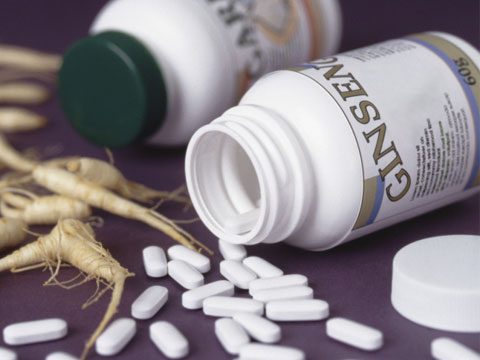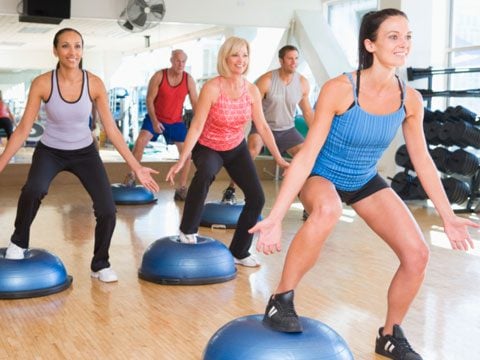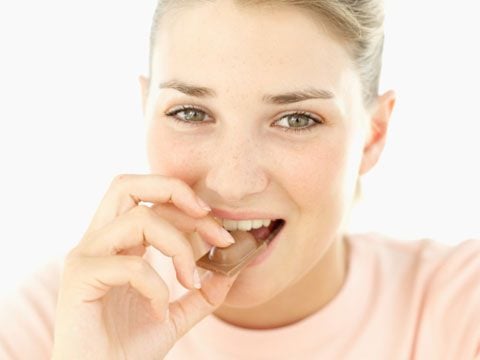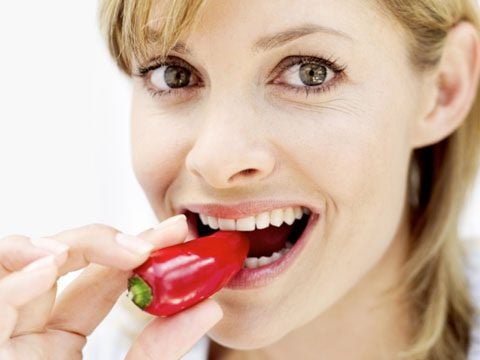Life Hacks to Happiness- All the Endorphin Re leasers We Could Find
General InformationWe see life hacks on line all the time. Some are great and others just make you say “WHY!!”. Starting today and continuing through this year ( or until I can’t find any thing new) we will be scouring the internet for you and putting together a list of happiness life hacks that were actually scientifically researched. So next time you find yourself stressed out or feeling down remember there can be a simple fix. Here is the first installment, we’ll be posting new ones every week . So try them out, keep your favorites and let the Endorphins fly!
1. Sniff some vanilla or lavender

Certain aromas can lift your mood by influencing the production of endorphins — the brain’s “feel-good” chemicals. For example, the scent of vanilla helps reduce anxiety, which is often associated with depression. According to a study at the Memorial Sloan-Kettering Cancer Center, patients undergoing MRIs who breathed vanilla-scented air reported 63 percent less anxiety than those who breathed unscented air.
To get the endorphin-boosting benefits of vanilla, add a drop or two of vanilla extract to the pot before the coffee brews, light some vanilla-scented candles, or add vanilla essential oil to your bathwater.
In another study, conducted on college students, inhaling the aroma of lavender essential oil improved symptoms of depression and insomnia You can dab lavender oil on your wrists and temples or diffuse it in the air with an inexpensive device you can pick up at the health food store.
2. Take a little ginseng

Ginseng may benefit people who are feeling fatigued and over-stressed and those recovering from a long illness. The herb has been shown to balance the release of stress hormones in the body and support the organs that produce these hormones. It may also enhance the production of endorphins, ‘feel-good’ chemicals produced by the brain. Many long-distance runners and body builders take ginseng to heighten physical endurance. Some nutritionally-oriented doctors and herbalists believe that ginseng is able to delay fatigue because it enables the exercising muscles to use energy more efficiently.
There is some scientific evidence that ginseng improves mental performance, including memory and concentration, and is useful in reducing blood sugar levels in people with type 2 diabetes. Other benefits may include treating some cardiovascular conditions (including high blood pressure and high cholesterol levels), chronic obstructive pulmonary disease (emphysema, chronic bronchitis) and bothersome menopausal symptoms. Animal studies suggest it helps protect nerves from damage (including damage due to diabetes), helps the liver restore itself after damage, aids digestion and protects the stomach against ulcers caused by too much acid or aspirin.
3. Take a group exercise class

4. Seek out daily laughter

It’s been observed that children laugh about 300 times a day, whereas adults laugh, on average, only about five times each day. The more we laugh, the better our perspective. Problems also seem to shrink, bringing an increased sense of energy. Over the centuries it has been claimed that laughter is one of life’s greatest medicines; as the Bible says, ‘a merry heart doeth good like a medicine’ (Proverbs 17:22).
Laughter is sometimes described as ‘inner jogging’. Research has shown that it can help to: • Lower blood pressure. • Reduce stress hormones. • Boost immune function by raising levels of infection-fighting cells. • Trigger the release of endorphins, the body’s natural painkillers. • Produce a general sense of wellbeing.
Modern humor therapy dates from the 1930s, when clowns were brought into American hospitals to cheer up children hospitalized with polio. More recently, the role of laughter as an aid to healing has been well documented in Anatomy of an Illness as Perceived by the Patient, by the American journalist, author and professor Norman Cousins, who created his own laughter-based, self-healing regime after being diagnosed with a degenerative disease. He suffered adverse reactions to most of the drugs he was given and decided, with the cooperation of his doctor, to take matters into his own hands. Cousins discontinued his medication and, as well as taking megadoses of vitamin C, spent his days watching Marx Brothers films and episodes of the TV comedy show Candid Camera, as well as reading humorous books. He claimed that 10 minutes of laughing gave him 2 hours of drug-free pain relief. In time he experienced a gradual withdrawal of symptoms and eventually regained most of his lost freedom of movement.
In India, Laughing Clubs, in which participants gather in the early morning for the sole purpose of laughing, are becoming increasingly popular, while in the UK, the psychologist and psychotherapist Robert Holden launched the country’s first laughter clinics in 1991 with funding from the NHS. Demand was so great that he set up the Happiness Project in 1995. Information can be found in the Resources section on page 242.
. Have sex

We are programmed to enjoy sex, but we often give it low priority, so it simply doesn’t happen. But this is to ignore one of nature’s great relaxants and a joyful de-stressing activity which burns calories, too.
As mentioned earlier, however, when we are anxious or stressed our desire may be switched off, and we may need to give it a helping hand. Try to create a romantic atmosphere. Buy an oil burner, to produce a sensuous fragrance, and try giving each other a relaxing massage in a candlelit room, using aromatic oils such as jasmine, rose or bergamot. Put on soothing music, and take time to slow down. Enjoy being together with your partner in a relaxed and fun way.
Give as high a priority to this activity as you do to anything else in your life that you consider important. Research shows that being touched reduces stress – as well as alleviating pain and helping to heal injuries, according to Stanford University. Taking time for those intimate moments also soothes us, uplifts us (due to the release of those mood-enhancing endorphins), and gives a sense of belonging and security.
6. Savor some chocolate

Chocolate-lovers will be delighted to hear that dark chocolate provides protection against heart attacks and strokes. Thanks to its high content of polyphenols and other antioxidants, dark chocolate reduces inflammation, lowers blood pressure, reduces ιbad᾿ LDL cholesterol, boosts ιgood᾿ HDL cholesterol and protects the health of your arteries. It also contains chemicals that prompt the release of endorphins, the body’s pain-relieving and pleasure-promoting hormones. As you will find out in Step 9, a sense of wellbeing is vitally important to keeping your cardiovascular system in top condition.
In one major review of 139 studies conducted over nearly 40 years, researchers concluded that chocolate consumption could lower the risk of cardiovascular death by around 19 per cent. That’s the good news. The bad news, for some, is that all you need to eat to improve your health is 6.7g per day. That’s equivalent to one small square two or three times a week – the heart benefits tend to disappear with consumption of larger amounts. A little dark chocolate may even help to curb our appetite for unhealthier foods, according to research at the University of Copenhagen, which reveals that dark chocolate is more filling than milk chocolate and reduces cravings for salty, fatty or sugary items.
The key to eating chocolate is to know when to stop and when not to indulge. If you are a chocoholic – and a craving for chocolate is the most common of all food cravings in both men and women – try taking a brisk 15 minute walk. Researchers at the University of Exeter found that a walk allayed cravings in chocoholics, even in tempting situations.
7. Listen to music

8. Eat something spicy

The hot, spicy taste of foods is not, in fact, a taste sensation but a feeling of pain. Capsaicin – the chemical compound that makes chili peppers hot – binds to proteins, or pain receptors, of nerve cells in the mucous membranes of the nose and mouth. The nerve impulses produced in this way pass via the trigeminal nerve into the brain, creating a painful burning feeling. The same receptors also react to heat, so that when heavily spiced food is eaten hot, the effect is even more intense. However, the pain is offset by the body’s reaction, which is to release endorphins – naturally occurring opioids that produce a feeling of wellbeing – which could explain the popularity of hot, spicy food. Another positive effect of hot spices is that they kill pathogens and promote sweating – the latter effect being especially useful for cooling the body in hot climates.
Stay Calm Stay Healthy, 1,001 Great Ways to Get Better, Conquering Heart Attack and Stroke, Vitamins, Minerals & Supplements, No More Brain Drain, 1,001 Science Questions Answered

Leave a Reply
Want to join the discussion?Feel free to contribute!